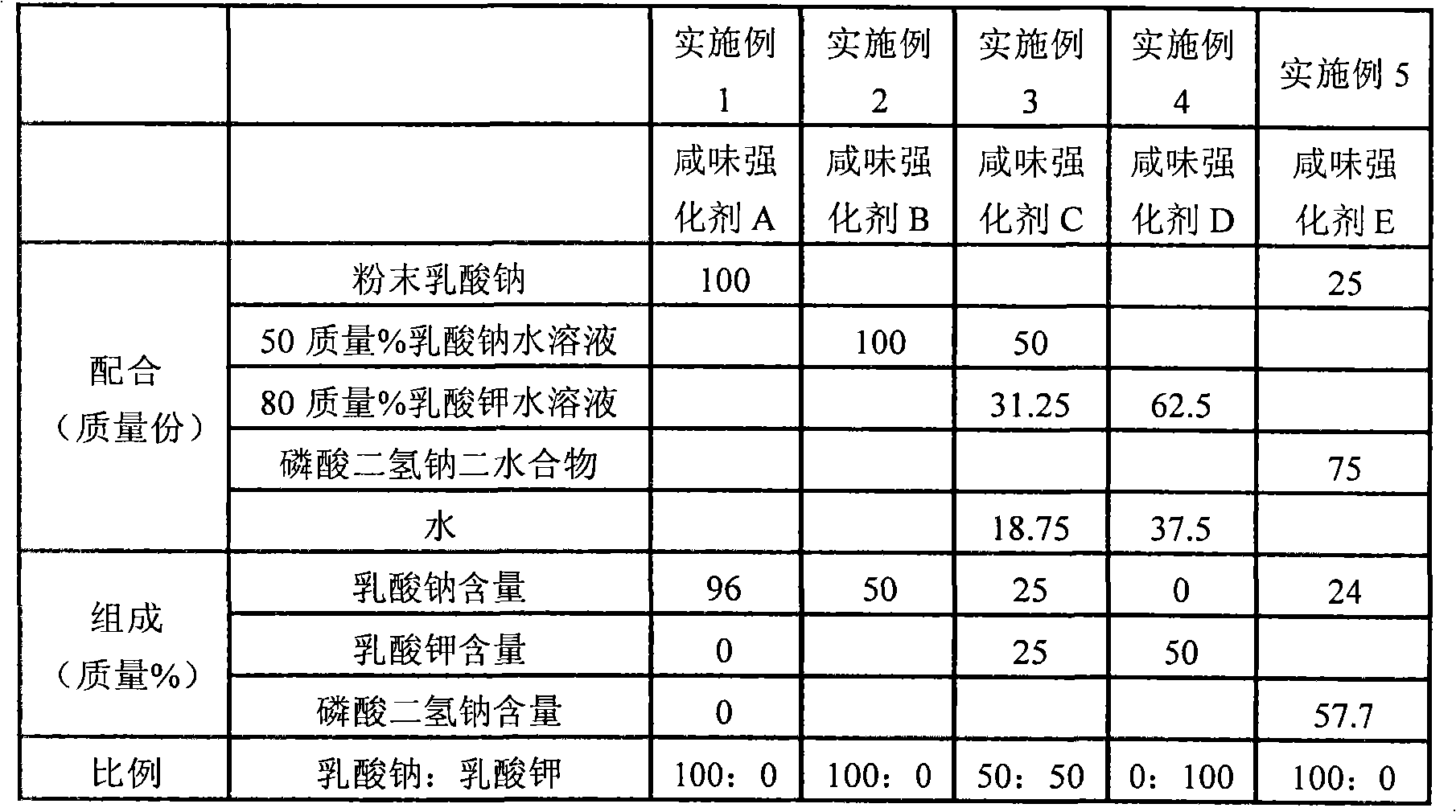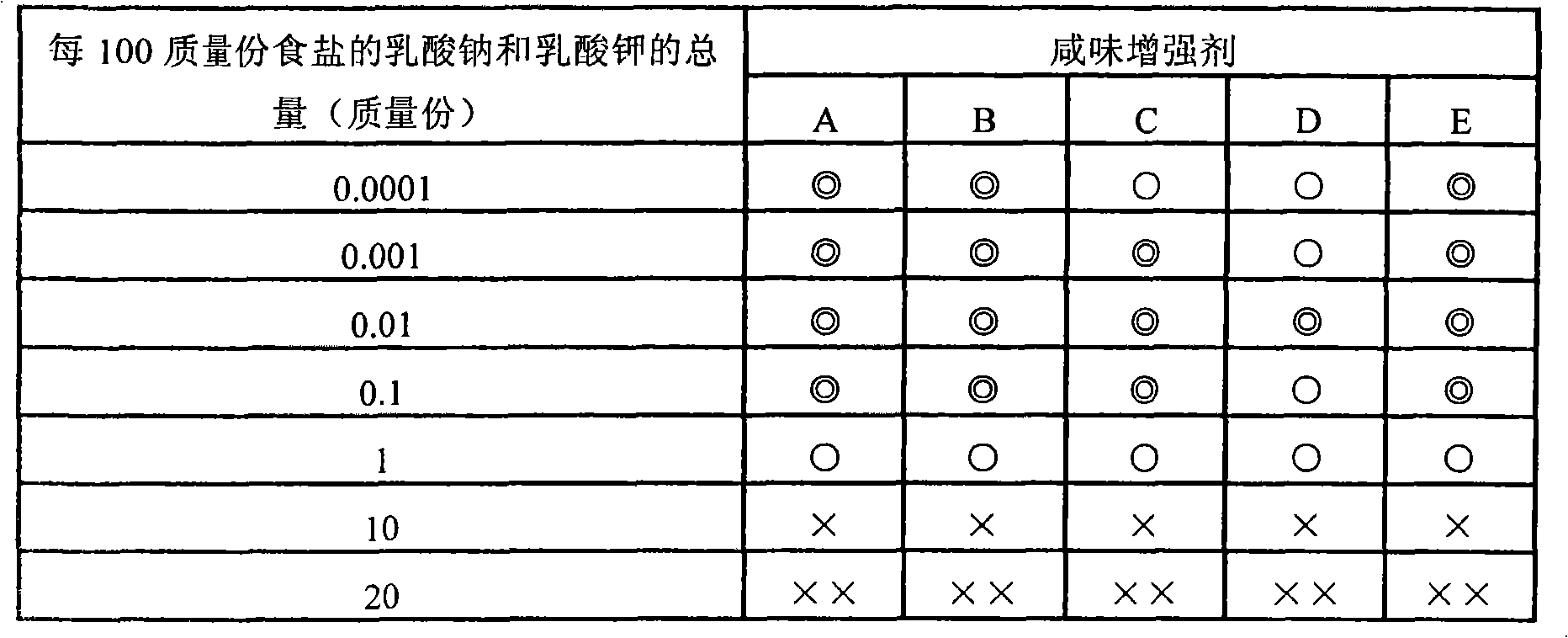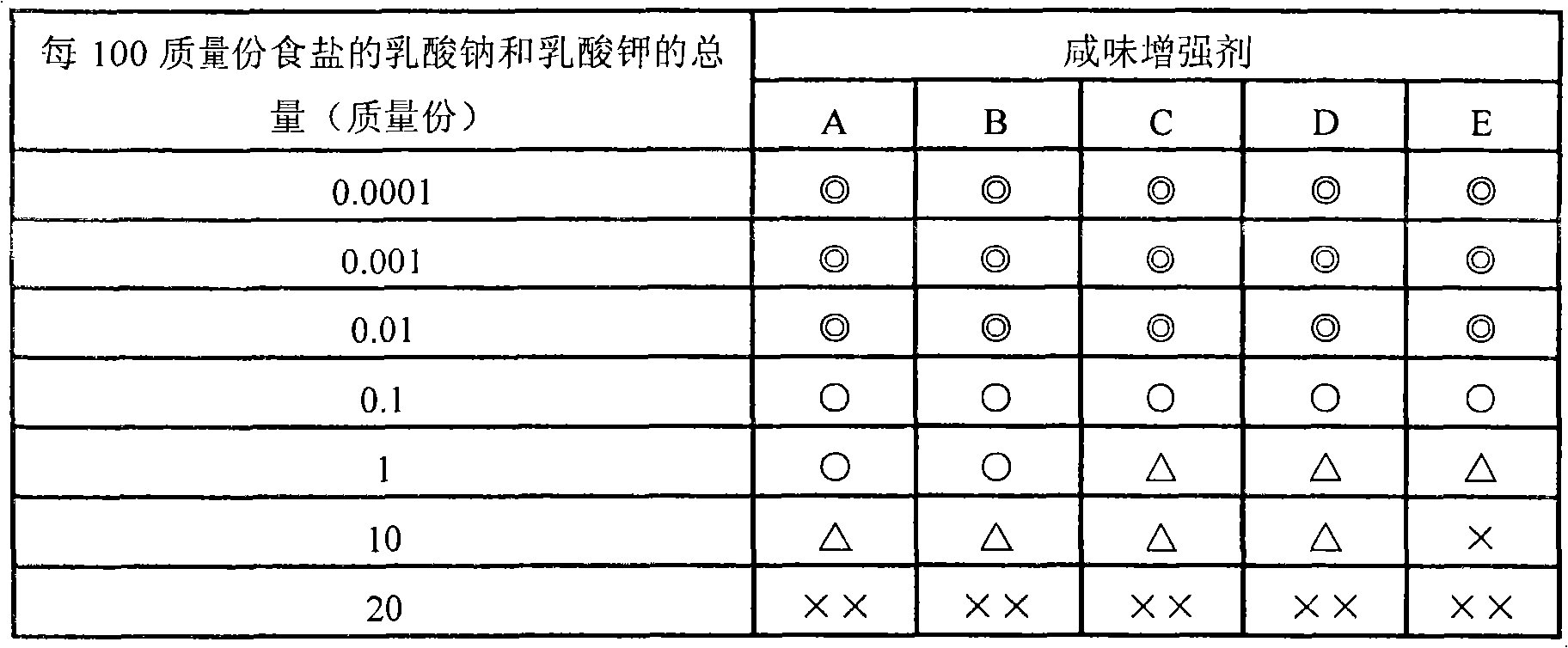Salty taste enhancer
A technology of enhancer and salty taste, applied in the field of salty taste enhancer, can solve the problems of changing the quality of food taste, weak enhancing effect, reducing the content of sodium chloride, etc.
- Summary
- Abstract
- Description
- Claims
- Application Information
AI Technical Summary
Problems solved by technology
Method used
Image
Examples
Embodiment 1~5
[0061] [Examples 1-5] Production of salty taste enhancer
[0062] Sodium lactate powder (manufactured by fermented lactic acid Na powder-S96 / Purac Japan Co., Ltd.), 50% by mass sodium lactate aqueous solution (manufactured by Wako Pure Chemical Industries, Ltd.), 80% by mass potassium lactate aqueous solution (manufactured by Kanto Chemical Co., Ltd.), dihydrogen phosphate Sodium dihydrate (food and drink additive / manufactured by Kanto Chemical Co., Ltd.) and water were mixed in the formulation of the following Table 1 to obtain the salty taste enhancers A to E of the present invention. In addition, the sodium lactate content, potassium lactate content, sodium dihydrogen phosphate content, and the ratio of sodium lactate to potassium lactate in each salty taste enhancer are described in Table 1.
[0063] Table 1
[0064]
[0065] * The above ingredients represent the content of the ingredients after removing the water in the salty taste enhancer
experiment example 1
[0067] According to relative to 100 parts by mass of sodium chloride, the total content of sodium lactate and potassium lactate reaches 0.0001 parts by mass, 0.001 parts by mass, 0.01 parts by mass, 0.1 parts by mass, 1 part by mass, 10 parts by mass, and 20 parts by mass. The salty taste enhancers A to E were mixed to produce a salt composition, and the following salty taste intensity and taste quality were evaluated.
[0068]
[0069] Let the 9-member panel lick the salt composition obtained in the above-mentioned Experimental Example 1 and the salt prepared as a control made of 100% by mass of sodium chloride, and evaluate the salty taste intensity, Taste quality was evaluated in 5 grades according to the following about the total points. Table 2 shows the results of salty taste intensity, and Table 3 shows the results of taste quality.
[0070]
[0071] Feel the salty taste that is obviously strengthened compared with the control: 2 points
[0072] Feel a slightly e...
Embodiment 6
[0095]Mix 82 parts by mass of sodium chloride, 0.0164 parts by mass of salty taste enhancer A, 16 parts by mass of sodium L-glutamate, and 2 parts by mass of cornstarch, extrude and granulate, and obtain 0.02 parts by mass relative to 100 parts by mass of sodium chloride. Salt composition A of the present invention of sodium lactate. This salt composition A and black sesame were mixed at a mass ratio of 20:80 to obtain Rice Companion 1 which is the food and drink of the present invention. On the other hand, Rice Companion 2 produced by the same compounding and manufacturing method as in Example 6 was prepared as a control, except that the salty taste enhancer A powder sodium lactate was not used at all. Here, these two kinds of rice companions were compared and eaten. As a result, the rice companion 1 of the food and drink of the present invention had a significantly stronger salty taste than the rice companion 2 that did not use the salty taste enhancer A, and no peculiar sme...
PUM
 Login to View More
Login to View More Abstract
Description
Claims
Application Information
 Login to View More
Login to View More - R&D
- Intellectual Property
- Life Sciences
- Materials
- Tech Scout
- Unparalleled Data Quality
- Higher Quality Content
- 60% Fewer Hallucinations
Browse by: Latest US Patents, China's latest patents, Technical Efficacy Thesaurus, Application Domain, Technology Topic, Popular Technical Reports.
© 2025 PatSnap. All rights reserved.Legal|Privacy policy|Modern Slavery Act Transparency Statement|Sitemap|About US| Contact US: help@patsnap.com



